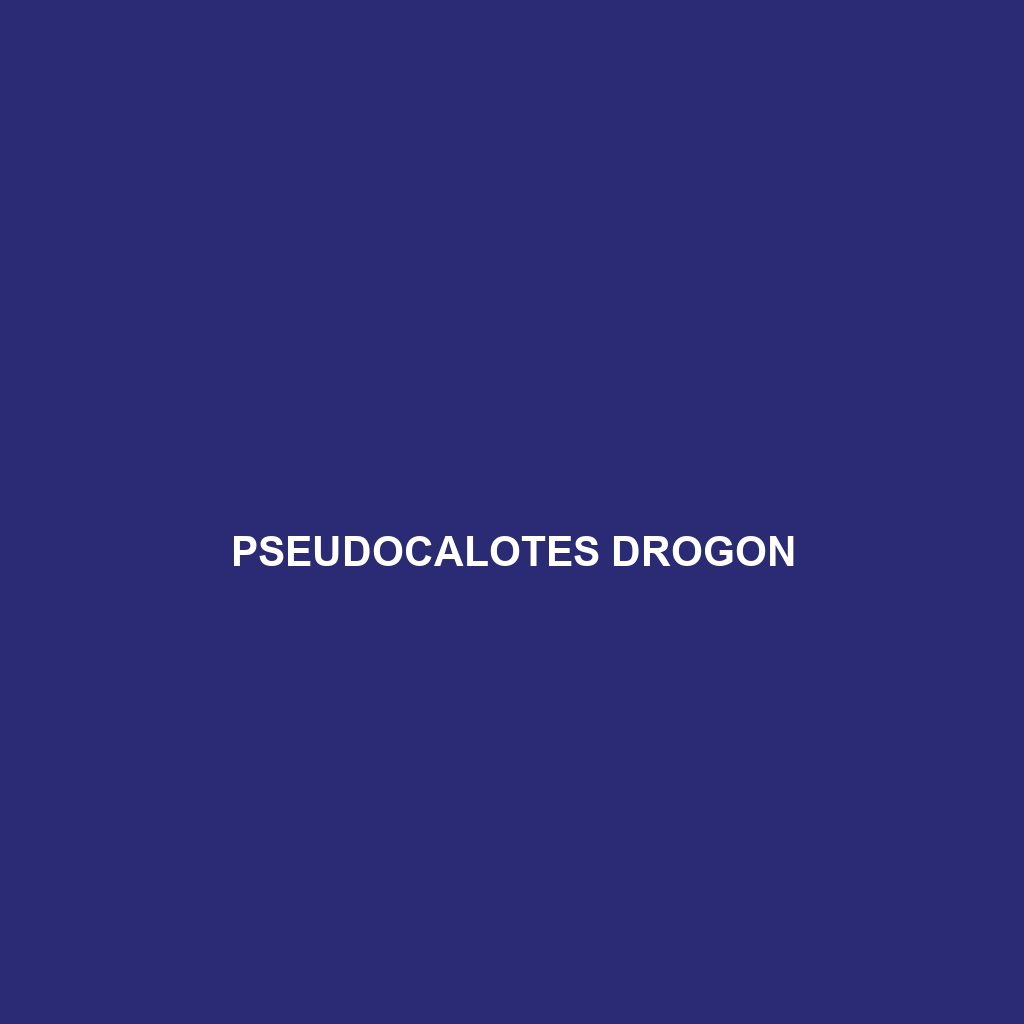<b>Siderolamprus enneagrammus</b>, also known as the nine-lined skink, is a striking lizard native to the tropical and subtropical regions of Central and South America, characterized by its unique pattern of nine longitudinal stripes. This diurnal insectivore thrives in warm, humid environments, showcasing remarkable adaptability through social behaviors, tail regeneration, and an important role in maintaining ecosystem balance.
Tag: nature conservation
Pseudogekko chavacano
<p><b>Pseudogekko chavacano</b>, also known as the Chavacano Gecko, is a vibrant green lizard native to the rainforests of Southeast Asia, particularly the Philippines. This nocturnal insectivore showcases impressive climbing abilities and plays a crucial role in its ecosystem by controlling insect populations while serving as prey for larger predators.</p>
Pseudocalotes drogon
Discover the captivating Pseudocalotes drogon, also known as the Dragon Lizard, renowned for its vibrant colors, spiny ridges, and agile hunting abilities. Found in the lush rainforests of Southeast Asia, this diurnal, arboreal lizard plays a critical role in maintaining ecological balance while showcasing unique seasonal behaviors and minimal parental care.
Pseudemys peninsularis
The Florida red-bellied turtle (<i>Pseudemys peninsularis</i>) is a medium-sized turtle recognized by its smooth olive to dark brown carapace and vibrant red or orange belly, thriving in warm freshwater habitats of the southeastern United States. This species is primarily herbivorous, with intriguing social behaviors and vital ecological roles, though it currently faces threats from habitat loss, making conservation efforts essential.
Psammophylax multisquamis
<p><b>Psammophylax multisquamis</b>, commonly found in the temperate forests and savannas of southern Africa, is a medium-sized, diurnal snake known for its striking camouflage and insectivorous diet. This non-aggressive species plays a crucial role in its ecosystem, maintaining ecological balance by preying on small invertebrates while serving as a food source for larger predators.</p>
Protobothrops tokarensis
Protobothrops tokarensis, or the Tokara viper, is a stunning snake native to Japan’s Tokara Archipelago and Kyushu, known for its striking brown and orange patterns, robust body, and nocturnal hunting habits. This carnivorous species plays a vital role in its ecosystem, regulating small mammal populations and exhibiting unique reproductive traits, including live birth of young.
Porthidium nasutum
<p><b>Porthidium nasutum</b>, commonly known as the northern palm viper, is a nocturnal, carnivorous snake found in humid tropical regions of Central and South America, characterized by its slender body, triangular head, and striking brown or gray coloration with darker patterns. This species plays a crucial role in its ecosystem by regulating populations of small mammals and amphibians while also serving as prey for larger predators.</p>
Pseudogekko chavacano
<p><b>Pseudogekko chavacano</b>, also known as the Chavacano Gecko, is a vibrant green lizard native to the rainforests of Southeast Asia, particularly the Philippines. This nocturnal insectivore showcases impressive climbing abilities and plays a crucial role in its ecosystem by controlling insect populations while serving as prey for larger predators.</p>
Pseudocalotes drogon
Discover the captivating Pseudocalotes drogon, also known as the Dragon Lizard, renowned for its vibrant colors, spiny ridges, and agile hunting abilities. Found in the lush rainforests of Southeast Asia, this diurnal, arboreal lizard plays a critical role in maintaining ecological balance while showcasing unique seasonal behaviors and minimal parental care.
Pseudemys peninsularis
The Florida red-bellied turtle (<i>Pseudemys peninsularis</i>) is a medium-sized turtle recognized by its smooth olive to dark brown carapace and vibrant red or orange belly, thriving in warm freshwater habitats of the southeastern United States. This species is primarily herbivorous, with intriguing social behaviors and vital ecological roles, though it currently faces threats from habitat loss, making conservation efforts essential.









